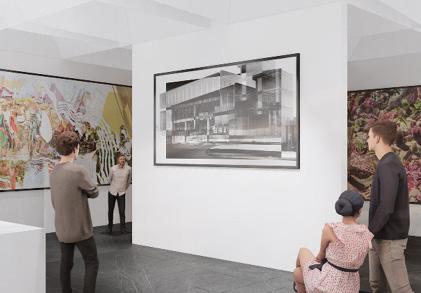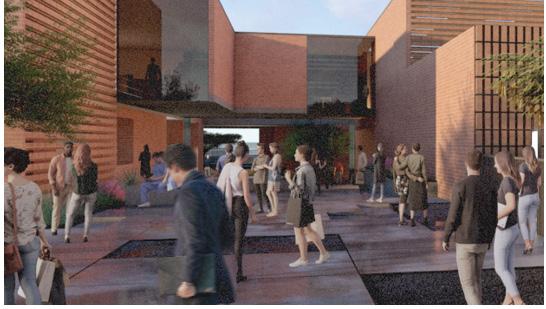
4 minute read
César López Rodriguez
César López-Rodriguez
MoCA Tucson: Exploring Community Identity through Art


The idea for this project originated from a simple but key element. “Creating a space around MOCA, one in which connections can be forged around a single goal of improving the community”. I think now more than ever, it is important to think about the people who make up the community and have a unique sensibility that can be tailored in ways that can improve their lives. With this idea in mind the vision for MOCA is one that focuses on connecting often overlooked groups of people to services that might not be as easily accessible otherwise. I believe that as architects, and architects in the making, our goals should always be driven by the community, as a means to create architecture that can develop and change over time. “Iconic” architecture that can help develop tourism and the local economy while also providing a social benefit to its residents, as to not displace them over time.
The conception of the idea began by exploring some of the unique elements that make up the architecture that we often find in the American southwest. This idea of having very boxy and massive volumes of program made up entirely of masonry, adobe or any other clay like material with a few but thoughtfully placed openings can convey a very “monumental” experience inside of them. This type of architecture is special because it is heavily driven by the hands who make it. It is fitting that an art museum in a place like Tucson Arizona would celebrate this forgotten tradition.
It is important to rethink the way in which we think about public space. I believe that through a combination of these programs, we can bring a larger number of visitors and maintain a steady stream of funding. This would reduce the need for them to rely solely on grants from state and local governments to fund basic needs while fostering a relationship with a private sector of the community. The goal for this project was to propose something that was drastically different from what MoCA had been used to in their current location without requiring to expand their current staff. I want to give MoCA the opportunity to grow and become a pillar inside this strong and inclusive community. One of the most important parts of the project is the main gallery. This idea was grounded in two different qualities. The softness of light and the “hard shell” surrounding it. I wanted to convey the idea of walking below a cloud. I think the softness and blooming quality of light, in an art museum should serve as blank canvas for art to sit on. To accomplish this, I chose to create a tessellation pattern based on the field of view one would need to appreciate art from different distances. And create structure from wire and fabric that could hide all the “behind the scenes” action that can draw away from the art. For the shell, I chose to use a material very reminiscing of the southwest, in the form of roofing tile. The traditional and emblematic material that gives many houses their unmistaken cookie cutter look, and also a material widely found in Tucson’s terracotta clay pit. Many, if not most, of Tucson’s homes and buildings were built with clay found in that pit no more than a couple miles away. To adopt this, I proposed a structural skin system that would allow these to be held away from the building and allow the light and breeze to filter in when the weather allows for it, but mitigate the harsh light found in the desert.
Ultimately, I think that architecture in the coming year/decades will have to change. As we continue to move closer and closer to a more digital age, we need to find spaces and moments in which we can break free from the mundanity of day-to-day life. Spaces that can turn MoCA into a true third space, one that people visit as a means to escape the routine but struggle to leave. These spaces include a small clinic, a multi-generational daycare, where the kids and elderly of the community can find a place to play and learn from another, and a small bi-lingual library with a coffee shop where students can work and interact. My vision for MOCA is one that focuses on paying homage to some of the forgotten traditions left from the historic barrios that make up Tucson to bring spaces that in addition to the galleries and services found in MOCA can also bring a special character to the community.














